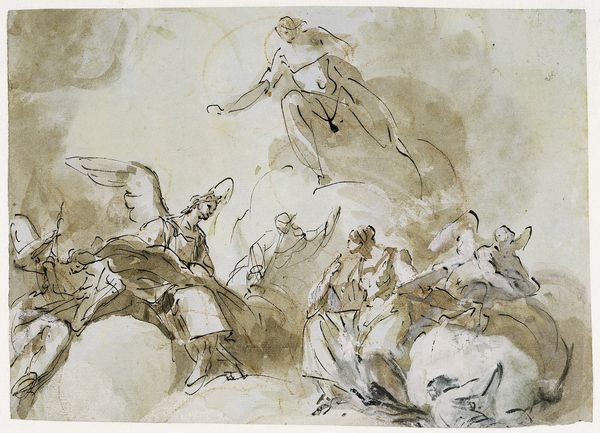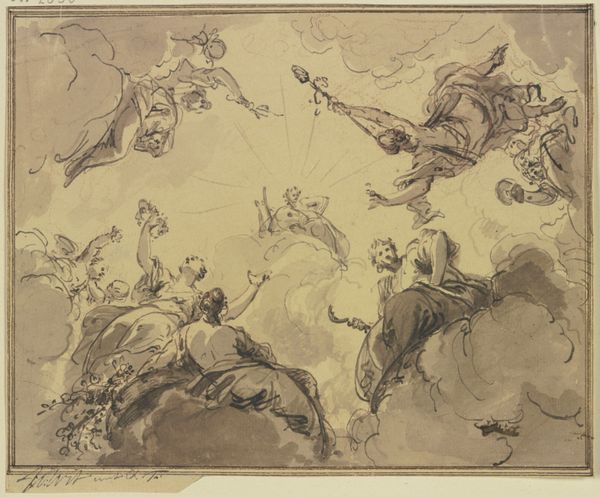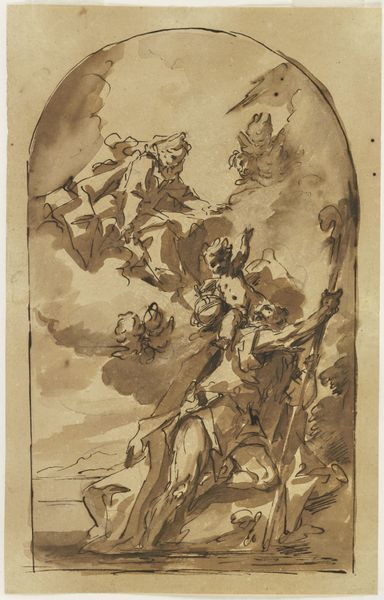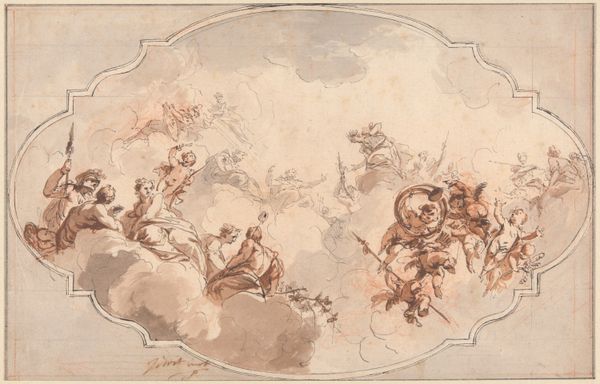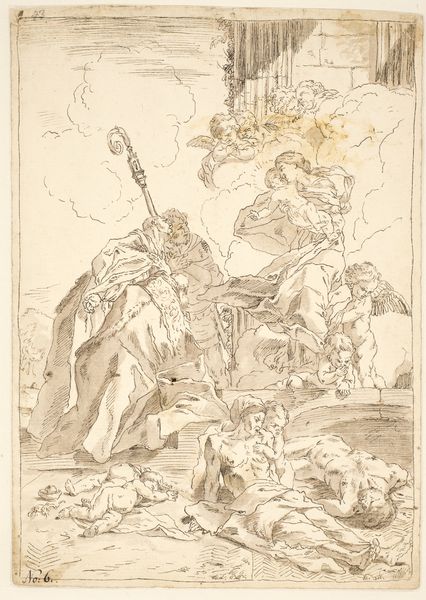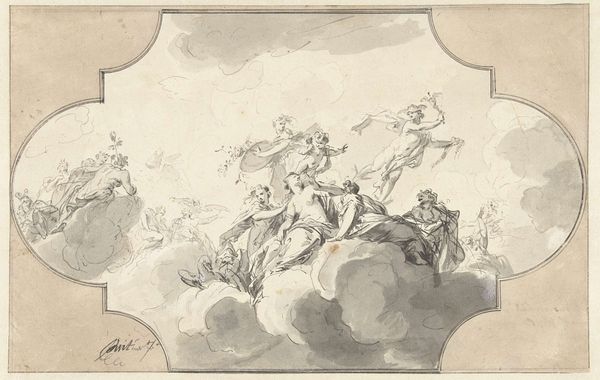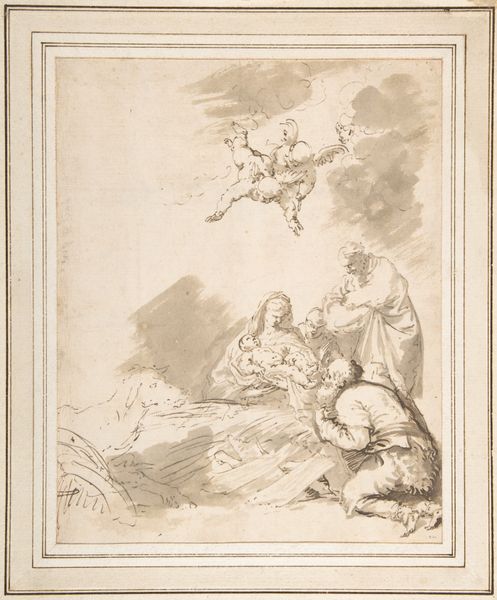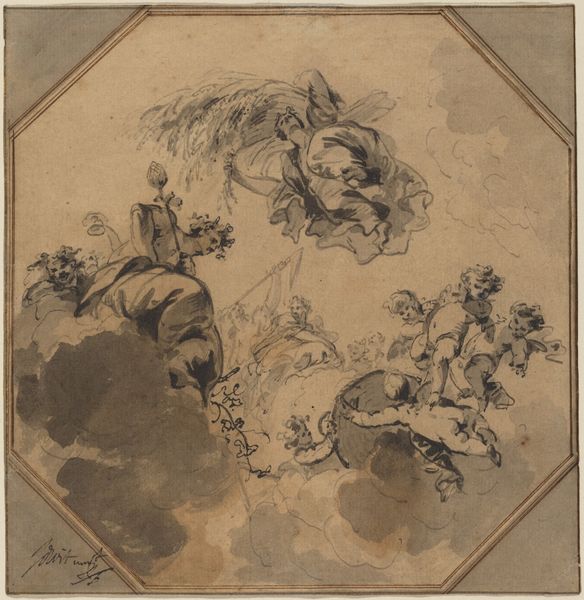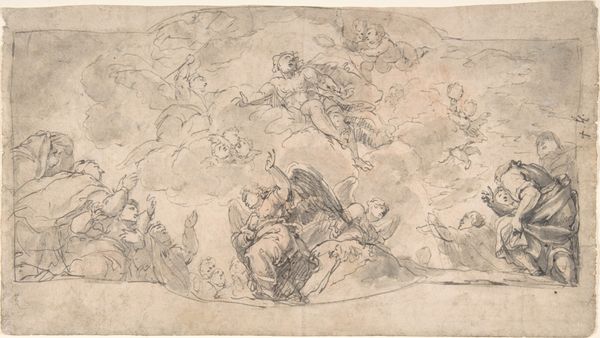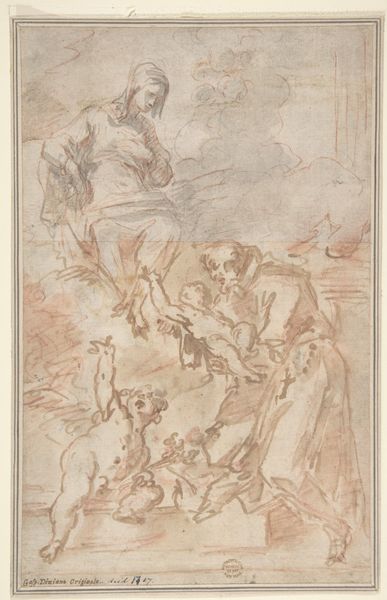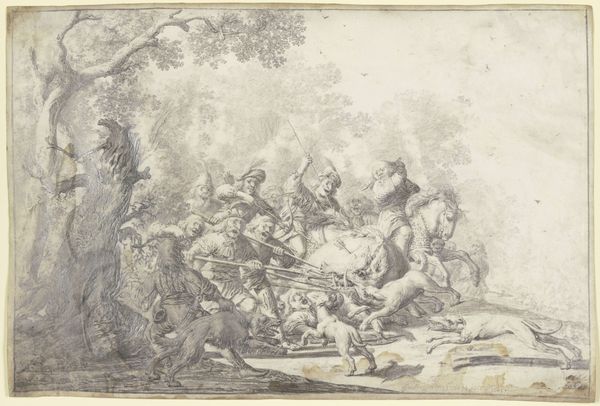
watercolor
#
allegory
#
watercolor
#
history-painting
#
watercolor
#
rococo
Dimensions: height 200 mm, width 200 mm
Copyright: Rijks Museum: Open Domain
Editor: This is Jacob de Wit's 1726 watercolor, "Ontwerp voor een plafondschildering met Diana en Endymion," or "Design for a ceiling painting with Diana and Endymion." I’m struck by the lightness of it, how the figures seem to float effortlessly. How would you interpret the symbolism in a piece like this? Curator: I see echoes of ancient longings, reinterpreted through a Rococo lens. Diana, the moon goddess, with her eternal youth and watchful spear, embodies a timeless quest. But who is Endymion to you? Editor: Well, I know the myth says he was a shepherd, blessed—or cursed—with eternal sleep and Diana's constant attention. The cherubs circling above feel celebratory, almost mocking. Curator: Mocking, perhaps, the futility of mortal desires? The cherubs, the sleeping shepherd, the watchful goddess – it’s a constellation of symbols pointing towards our shared human yearning for the unattainable, immortality, constant affection, things we see celebrated in a lot of cultural products. Do you see how the ephemeral medium, watercolor, reinforces the fleeting nature of these desires? Editor: That's a great point. I hadn't considered how the physical lightness of the watercolor underscores that sense of transience. So it's not just the myth, but how the materials themselves speak to this theme of fleeting desire. Curator: Precisely! The continuous re-emergence of these characters and myths illustrates how we keep revisiting the same archetypal stories. Do the images speak of different things now than when they were originally created? Editor: Definitely something to think about. It shows how visual language adapts across eras. Curator: Indeed. A dialogue across centuries through enduring symbols.
Comments
No comments
Be the first to comment and join the conversation on the ultimate creative platform.

